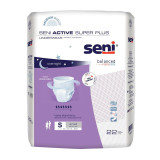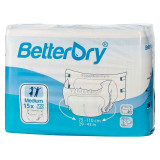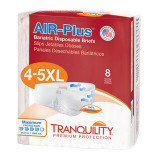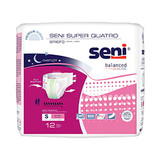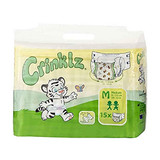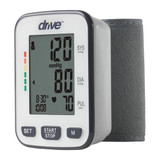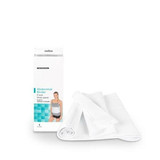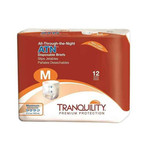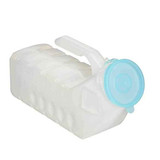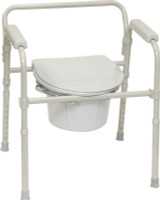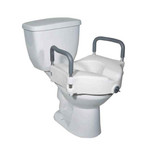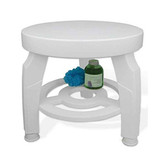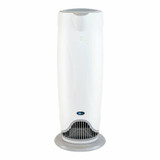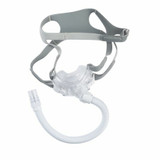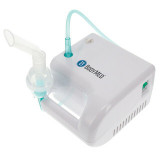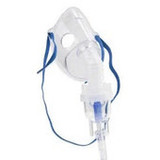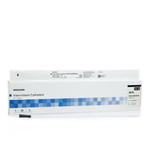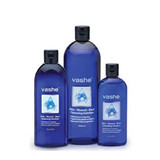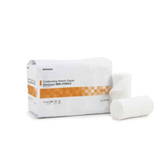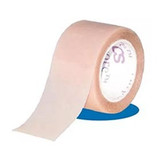
Adaptive Aids for Seniors - Making Daily Tasks Easier
As we age, our bodies naturally change. Daily tasks that were once effortless, like climbing stairs, preparing meals, or buttoning shirts, may become more challenging due to decreased mobility, vision problems, or reduced dexterity. This can lead to a sense of frustration and a decline in independence.
The ability to perform daily activities independently is crucial for maintaining a sense of control and self-worth, especially for older people. This cloud does, however, have a silver lining. A wide range of adaptive aids is available to help people overcome these difficulties and maintain their independence.
Benefits of Adaptive Aids
Recent technological advances have made a wide range of tools and devices available to assist people who experience difficulties. In addition, the cost of many of these aids is within the reach of most people, so there is no reason not to enjoy the benefits on offer.
Maintaining Independence: Assistive devices help people overcome their limitations, allowing seniors to continue performing daily tasks independently.
Reduced Risk of Injury: Slips and falls are a major safety concern for seniors. Mobility aids like canes, walkers, and grab bars can provide support and stability, reducing the risk of falls and injuries in the home.
Increased Confidence: When people complete tasks safely and independently, their confidence and self-esteem naturally increase.
Improved Quality of Life: Adaptive aids can significantly improve a person's ability to participate in daily activities, hobbies, and social interactions, affording them a higher overall quality of life.
Types of Adaptive Aids
A vast array of tools and devices are available to address almost every physical challenge an older adult may be experiencing. Let’s take a brief look at some of the most common categories:
Mobility Aids
These include canes, walkers, mobility scooters, and wheelchairs. They provide stability and support for people with varying levels of balance issues or mobility impairment. Read this guide for more information on mobility aid options.
This category also covers safety and accessibility in the home. Wheelchair ramps and scooter lifts provide easier access in and around the home, and widening doorways make navigation inside the home easier and safer for people using scooters or wheelchairs.
Kitchen and Dining Aids
Reacher grabbers, jar openers, electric can openers, and cutlery with thicker, easy-grip handles make routine kitchen tasks easier for people with impaired mobility or grip strength.
Non-slip mats can significantly reduce the risk of slipping on wet surfaces. They’re also recommended for the bathroom.
Bathroom Aids
Toilet seat risers make sitting down and standing up easier for people with limited mobility.
Handheld showerheads offer greater control and flexibility compared to fixed showerheads.
Grab bars inside the bathtub provide support and stability when entering and exiting the tub, while shower benches provide stable seating in the shower.
Dressing Aids
Here, we have long-handled shoehorns, button loopers, and dressing sticks. These reduce the need for bending and stretching and the manipulation of limbs, which is enormously helpful for people with limited mobility or dexterity.
Organization and Safety Aids
Medication organizers or dispensers coupled with pill reminder systems ensure that all doses are taken at the right time and in the correct dosages.
Fall detectors are wearable devices that alert emergency services or caregivers when the wearer falls. Alternatively, emergency alert systems typically consist of a wearable button that the wearer can press to call for help in an emergency.
Technology Aids
Technology aids help people with impaired hearing, sight, or dexterity use devices like tablets and smartphones to stay connected with friends and family. They offer voice assistants like Siri or Alexa, magnified screens, sound amplification, and large buttons to make them easier to use.
The lists and descriptions are not exhaustive, and many other specialized aids are available to address specific needs. The key is identifying the person's challenges and choosing the appropriate solution to promote their independence and safety.
Selecting the Right Aids
Being spoilt for choice is not necessarily a good thing. With so many options available, choosing the right product can be pretty tricky. So, here are a few things you can consider to help you select the ideal product.
Start with a needs assessment. Identify the nature or cause of the functional challenge. Does it stem from impairment in mobility, dexterity or vision, or is it due to cognitive issues?
Once you understand the specific needs, it's time to research and compare different types of aids within the relevant category. Consider factors such as functionality, cost and after-sales service and support.
We recommend that you try out an aid before buying it whenever possible. Many retail stores and occupational therapists have demonstration equipment and will offer expert advice on all their products. Alternatively, some suppliers may offer a short-term rental for evaluation purposes.
If you have any doubts, consult a therapist. They have relevant training and experience and can provide personalized recommendations as well as training on safe and effective use.
For a more personal touch, contact LL Medico. Our team has been in senior care for more than 25 years and can guide you through our wide range of mobility aids. We can also assist with other senior care supplies, such as nutritional supplements, diabetes care supplies, and adult diapers.
Using Adaptive Aids Effectively
Once you have bought your device, there are a few further factors to consider to ensure that you get the full benefit.
Always prioritize safety when using aids. Ensure it is set up exactly in accordance with manufacturer instructions.
Carry out regular maintenance and repairs to extend useful life and efficiency.
Explore all the features to get the best out of your new assistive device.
Get advice from family, caregivers, or professionals to help you use the aid effectively.
Explore resources available to help with the cost, such as insurance, government programs or senior discounts.
To improve safety and accessibility, you may need to modify the home environment. These may include installing ramps at doorways or thresholds or widening doorways, lowering light switches, and installing grab bars.
Ensure adequate lighting throughout the home, especially in stairwells and hallways, to help prevent falls and improve overall safety. Remove tripping hazards such as loose carpets and declutter passages and walkways to make navigation easier.
Investigate available training resources. Organizations like the National Alliance for Caregiving or the Family Caregiver Alliance have lots of resources covering a wide range of care-related issues. You can also join a community group where you can interact with other people with shared interests.
Conclusion
Adaptive aids are not a sign of weakness; they are valuable tools that can empower older people to maintain their independence, enhance their safety, and contribute to a better overall quality of life. Independence and a sense of control are essential for general well-being at any age. Adaptive aids can bridge the gap between limitations and abilities, allowing people with physical impairments to live life to the fullest for years to come.










